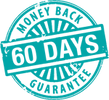Nail Fungus Fiction
-
 Nail Fungus is permanent.
Nail Fungus is permanent. -
 Nail Fungus always requires liver-damaging
prescription pills to treat.
Nail Fungus always requires liver-damaging
prescription pills to treat. -
 Nail Fungus is caused by poor hygiene.
Nail Fungus is caused by poor hygiene.
Nail Fungus Facts
-
 Nail Fungus is treatable!
Nail Fungus is treatable! -
 Topical treatments of nail fungus are
generally safe and can be effective.
Topical treatments of nail fungus are
generally safe and can be effective. -
 Although hygiene practices play a role in developing nail fungus, other factors, such as the immune system also contribute to the possibility of acquiring fungal nail infections
Although hygiene practices play a role in developing nail fungus, other factors, such as the immune system also contribute to the possibility of acquiring fungal nail infections
What Causes Fungal Nail Infections?
Fungal nail infections, as the name suggests, are caused by various fungi (fungal organisms). The most common is a group of fungi called dermatophytes, responsible for 90% of all toenail fungal infections.3 These fungi need the protein, keratin, which is found in the nails, skin and hair, to grow.
Other types of fungi, such as yeasts and molds (non-dermatophytes), can also cause nail infections, though these are less common. 1

How Do I Know If I Have A Nail Fungal Infection?
Some of the common symptoms of nail fungus are
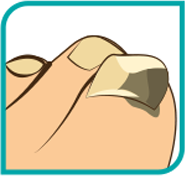
Whitish to yellowish, or brown-black discoloration of the nail
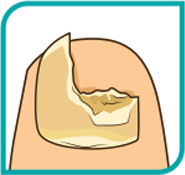
Crumbly, brittle, or chipping nails
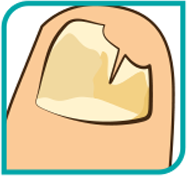
Splitting or distortion of the nail

Thickened nails

Blackening of the nail due to build-up of debris under the nail

Any depressions or appearance of streaks or ridges on the nail 2
If you have any of these symptoms, it could mean that you have a fungal nail infection. However, keep in mind that though fungal nail infection is the most common nail disorder, it only makes up half of all nail disorders. Which means, in some instances, it may not be a fungal nail infection.2,3 The only way to absolutely confirm that you have a fungal nail infection is through microscopic examination of the nail and/or culture. 2
Who Can Get Nail Fungus?
Fungal nail infections can develop in anyone at any age. However, there are a few risk factors that can increase your chances of developing a fungal nail infection:

Age
As you get older, your nails also age, becoming dry and brittle. This leads to cracks in the nail, allowing nail fungi to enter. 4

Gender
Males are three times more likely to be affected by fungal nail infections than women, though the reasons for this trend are unknown. 5

Immunity
In conditions where the immune system is weakened, the nail (and the body on the whole) is more susceptible to infections. 3

Nail Trauma
Trauma to the skin and nails and certain skin conditions, like psoriasis, also increase the risk of fungal nail infections because the fungus can enter more easily through the compromised skin and nails. 3,5

Foot Environment
Wearing tight or occlusive footwear for long periods increases the risk of acquiring fungal nail infections. The combination of a closed space and sweat provides a warm, moist environment for the fungi to grow. Poor nail grooming can also create a niche for fungal growth. Walking barefoot in shared wet facilities such as gym showers or swimming pools increases the risk of transmission of fungal infections from one person to another. 3,5

Diabetes
In people with diabetes, there is poor blood circulation in the feet, slower wound healing, and decreased sensations (trauma is not felt), all of which make it easier for nail fungi to enter and grow. 3

What Happens If I Get A Fungal Nail Infection?
In addition to causing nail discoloration, distortion and discomfort, severe cases of nail fungal infection can cause permanent damage to the nails. In such severe cases, and in certain conditions (such as diabetes and a weakened immune system) the fungal infection can spread to other parts of the body.3
In people with diabetes, in particular, there can be superadded bacterial infection of the foot and the formation of foot ulcers. 2
In order to prevent these complications, treatment should be initiated as soon as possible.
What Is The Treatment For Nail Fungal Infections?
The treatment for nail fungal infections can vary according to the severity of infection, the causative organism, and other factors that can affect the effectiveness and safety of the treatment, such as compatibility of the treatment with other medications the person may be taking. 2
Broadly, the treatment for nail fungal infections can consist of oral antifungals or topical antifungals or a combination of the two. Although treatment with oral antifungal agents is relatively shorter in duration (6 weeks for fingernail fungal infections and 12 weeks for toenail fungal infections) and have 50%+ cure rates, they come with several side effects and can affect liver function (where the drug is metabolized). 2
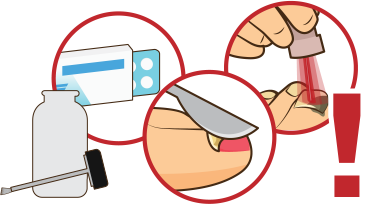
On the other hand, topical antifungal agents can act directly on the site of the infection with hardly any side effects, but the biggest challenge with topical antifungal agents is their difficulty or inability to penetrate through the nail plate and reach the nail bed where the fungus lives. For this reason, treatment with topical antifungal agents tend to be longer in duration (4-12 months for nail infections), however achieving cure with topical antifungal agents is possible. 2,5
This means that successful treatment with topical antifungal agents requires a combination of three elements: techniques that increase nail penetrability, patience, and perseverance!
At EmoniNail, we have developed The EmoniNail Method and our topical antifungal treatment based on scientific research and clinical trials. To learn more about the treatment and its mechanism of action, visit the “How it Works” page.
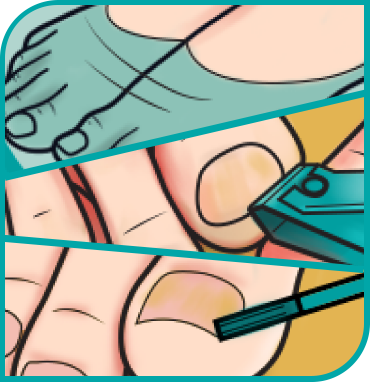
Restore Clear Nails with EmoniNail™
-
 Kills Nail Fungus
Kills Nail Fungus -
 Applies Easily with Topical Brush
Applies Easily with Topical Brush -
 Helps Clear Yellow Keratin
Helps Clear Yellow Keratin -
 Natural, Safe and Effective
Natural, Safe and Effective
-
 Unlimited Access to Treatment Support Experts
Unlimited Access to Treatment Support Experts
-
 Guaranteed to Work within 60 Days or Your Money Back
Guaranteed to Work within 60 Days or Your Money Back
-
 It Works
It Works


Reviewed and writing contributions by
Dr. Rohanti Ravikulan
Bachelor of Medicine Bachelor of Surgery (MBBS)1. Ghannoum M, Hajjeh R, Scher R et al. A large-scale North American study of fungal isolates from nails: The frequency of onychomycosis, fungal distribution, and antifungal susceptibility patterns. J Am Acad Dermatol. 2000;43(4):641-648. doi:10.1067/mjd.2000.107754
2. Westerberg D, Voyack M. Onychomycosis: Current Trends in Diagnosis and Treatment. Am Fam Physician. 2013;88(11). https://www.aafp.org/afp/2013/1201/p762.html. Accessed November 27, 2019.
3. Gupta A, Versteeg S, Shear N. Onychomycosis in the 21st Century: An Update on Diagnosis, Epidemiology, and Treatment. J Cutan Med Surg. 2017;21(6):525-539. doi:10.1177/1203475417716362
4. Elewski BE, Tosti A. Risk Factors and Comorbidities for Onychomycosis: Implications for Treatment with Topical Therapy. J Clin Aesthet Dermatol. 2015;8(11):38–42.
5. Ghannoum M, Isham N. Fungal nail infections (onychomycosis): a never-ending story?. PLoS Pathog. 2014;10(6):e1004105. Published 2014 Jun 5. doi:10.1371/journal.ppat.1004105










